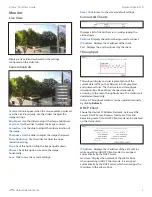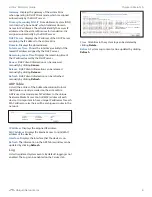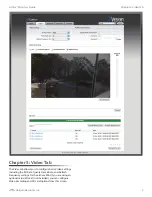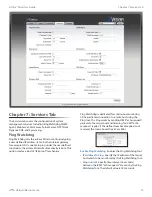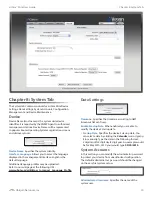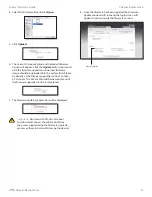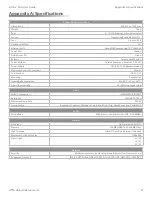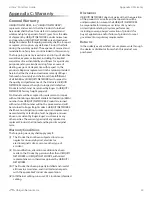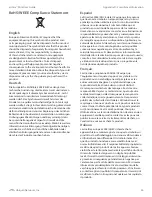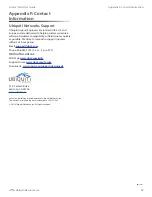
18
Chapter 7: Services Tab
airCam
™
Mini User Guide
Ubiquiti Networks, Inc.
NTP Client
The
NTP (Network Time Protocol) Client
option allows the
airCam Mini to synchronize the time over the Internet
from a network time server. Using this option helps to
ensure accurate time for recordings, schedules, and logs.
Enable NTP Client
Enables the airCam Mini to obtain the
system time from a time server on the Internet.
•
NTP Server
Specify the IP address or domain name of
the NTP Server.
Dynamic DNS
Enable Dynamic DNS
Select this check box to enable
Dynamic DNS service for the airCam Mini. Dynamic DNS
is a network service providing which allows real-time
notification to the DNS Server of any changes occurring
in the airCam Mini’s IP setting, there by allowing access
to the airCam Mini through a Domain Name even if the
airCam Mini’s IP address has changed.
Host Name
Defines the Dynamic DNS Host Name. A large
list of Dynamic DNS services is available here.
Username
Defines the Dynamic DNS Username.
Password
Defines the Dynamic DNS password. Select
Show
to display the password.
System Log
Enable Log
This option enables the registration routine
of the system log messages. By default it is disabled.
•
Enable Remote Log
Enables the syslog remote sending
function while System log messages are sent to a
remote server specified in the
Remote Log IP Address
and
Remote Log Port
fields.
-
Remote Log IP Address
The host IP address where
syslog messages should be sent. Remote host should
be configured properly to receive syslog protocol
messages.
-
Remote Log Port
The TCP/IP port of the host syslog
messages should be sent.
514
is the default port for
the commonly used system message logging utilities.
Every logged message contains at least a System Time
and a Host Name. Usually a particular service name which
generates the system event is specified also within the
message. Messages from different services have different
context and different level of the details. Usually error,
warning or informational system service messages are
reported, however more detailed Debug level messages
can be reported also. The more detailed system messages
are reported, the greater volume of log messages will be
generated.




